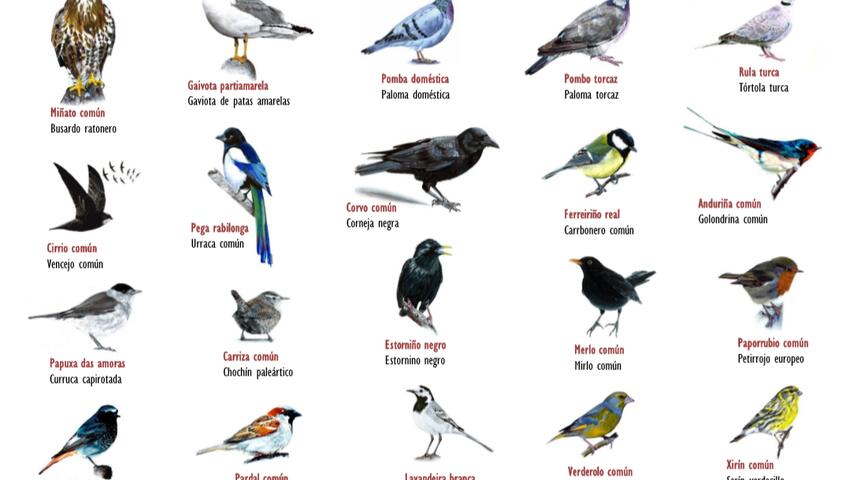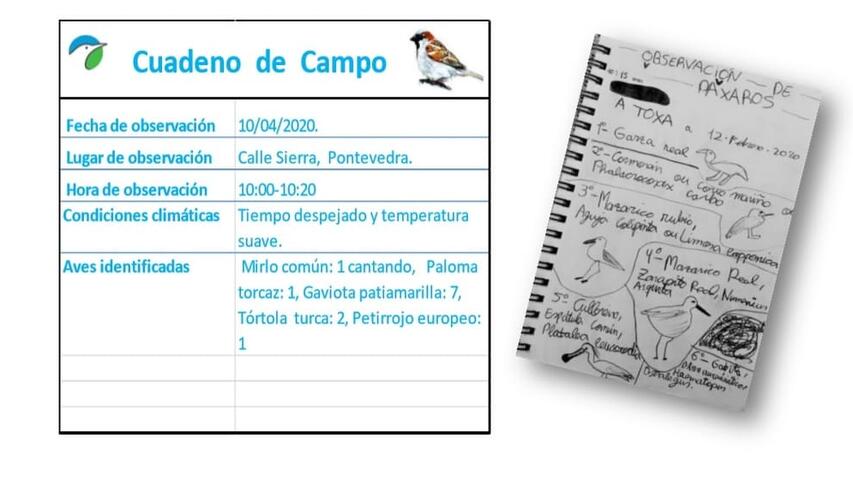Birds from home
With a pair of binoculars, a little piece of sky and tuning our ears we can enjoy the many birds that move around us, completely absorbed in their springtime activities.
The little human activity, the little noise we generate during the enclosure and the beginning of spring will allow us to enjoy nature without leaving home. Turismo Rías Baixas and SEO Birdlife propose you to learn more about it, and specifically about the world of birds. All you have to do is open your window, observe and listen carefully. We guide you to identify them and learn from experience by taking notes in your field notebook.
Birds, which are always carefree and happy, can bring us closer to the new season and make us happier, either when we observe them or when we listen to their trills, especially at this time of frenetic activity and song, as they need to attract females to mate or mark their territory.
From our window we can see and hear the urban birds that live in our towns and cities and that bring great benefits: they consume millions of flies and mosquitoes a year, they are bio-indicators of quality of life and they spread optimism. A 2017 university study suggests that people who live in neighbourhoods with abundant wildlife and vegetation are less likely to suffer from depression and stress. Birdwatching makes us feel more relaxed and calm, demonstrating that our connection with nature plays an important role in mental wellbeing.
With the change of season we can also enjoy migratory birds from distant Africa, such as the recently arrived barn swallows that herald spring, or the intrepid common swifts that in April will land on our buildings to cheer us up with their calls and their aerial acrobatics in the streets and squares.
Now that we have the opportunity, from Rías Baixas Tourism and SEO Birdlife we encourage you to record all the species you observe in a small notebook as a field notebook or through electronic applications created for this purpose, such as the citizen science platform eBird or the RRSS where information is posted every day. You can share your dates with #AvesDesdeCasa.
Great variety.
House sparrows (pardales comunes), turtle doves (rulas turcas), yellow-legged kittiwakes (gaivotas de patas amarelas), wood pigeons (pombos torcaces), blackbirds (merlos comunes), robins (paporrubios comuns), white wagtails (lavandeiras brancas), black starlings (estorniños negros) and countless other little birds are with us all year round, although we hardly pay them any attention.
- For a few minutes go out to the balcony or window to observe and listen carefully to the birds around us and feel happier.
- If you have binoculars or a camera, all the better, but if you don't, just your eyesight will do.
- The ideal time to spot birds is in the morning or at dusk.
- In a small notebook or using a mobile phone application, we will create a field notebook, in which we will write down the daily observations.
In the notebook we will mainlywrite down:
- Date of observation: write down the day, month and year.
- Place of observation: note the street, municipality and province where the sighting is made.
- Time of observation: note down the time when the observation began and when it ended.
- Weather conditions: (optional). Indicate the weather conditions at the time of the sighting.
- Birds identified: In this section we will write the common name of the bird and the number we have seen or heard.
- If we have children we can even encourage them to draw a picture of the bird they saw.
On the website of the Spanish Ornithological Society (SEO) you can find a lot of information to help you enjoy this exciting activity and where there is a special section for birdwatching from home.
And if you want a great free bird guide , you can download the Birds of Spain app on your mobile phone, where you will find all the birds of our country, descriptions, images and information about their songs.
You can download eBird and contribute with your data to citizen science. In the eBird platform you can upload all the bird records that we identify for a worldwide database, being useful also for researches all over the world. We will become active and direct collaborators in bird conservation.
You can also enjoy another way of watching birds, from the sofa: following the SEO/Birdlife webcams that transmit live images of some of the most emblematic species of our fauna, such as the black vulture, the lesser kestrel, the peregrine falcon or the white stork.

